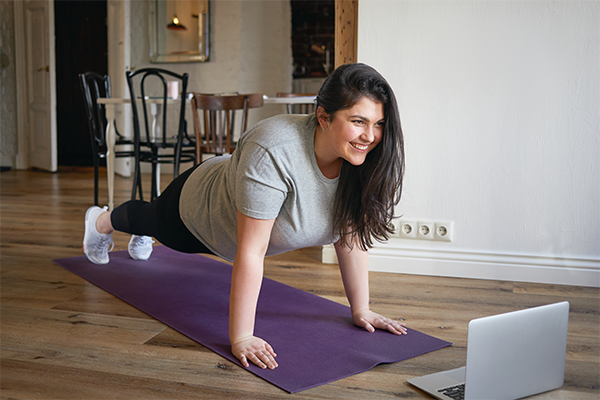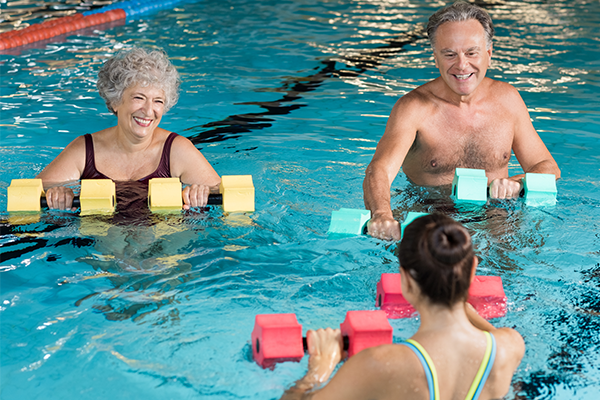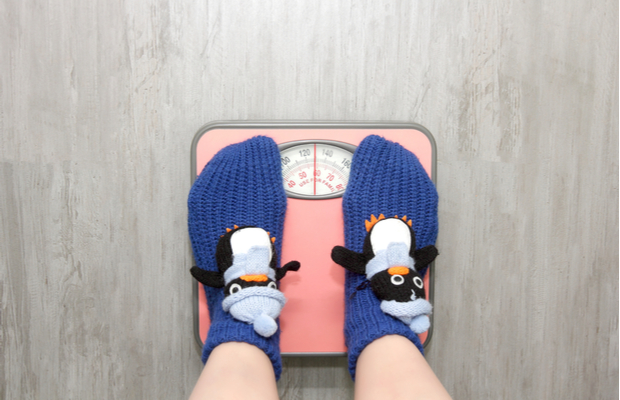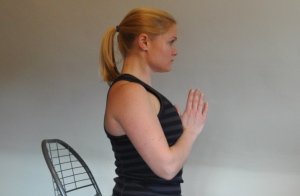Fewer daylight hours and colder weather means the thought of going outdoors might seem less appealing. But some creative approaches can ensure you remain active close to home (or without even leaving the house).
Turn housework into a workout

Things you’re doing in your everyday life can probably be adjusted to help you keep fit indoors. This can be particularly useful as an introduction to exercise if you’re new to it, or if you have health or mobility problems, like arthritis or a bad back.
Heather Probert, consultant physiotherapist at Royal Brompton and Harefield Hospitals, says: “Exercise has to fit into people’s lifestyles and be meaningful to them.”
She suggests: “You can try to make existing household tasks a bit more of a challenge. For example, you can do some bending or gentle squats while you fill the washing machine – if you put the clothes in bit by bit, you can do even more squats.
“Walking more quickly – even marching – while doing light housework such as hoovering or dusting works well, too.”
Free exercise videos

There are lots of free exercise resources available online.
The pandemic has brought changes that mean more people can enjoy exercise at home, Ms Probert says. “There’s a lot more focus generally on what people can do from home now. When it comes to exercise, doing an exercise video at home offers a lot more flexibility – you can do a day’s work and still find time for fitness.”
You don’t necessarily need special equipment – even if you’re following a workout video that uses equipment. “For strength and resistance exercises, you can use cans of soup or bottles of water as weights – it doesn’t really matter what it is,” says Ms Probert. “Just be sure not to overdo it.” Walls can be used for standing push-ups, and a bottom step can work for some step aerobics.
If you’re recovering from a cardiac event such as a heart attack, heart surgery or stent procedure, try BHF’s cardiac rehabilitation at home. Sign up and you’ll receive a weekly email for eight weeks including tips for recovery and safe exercises to help you keep fit indoors, with a range of levels from low-impact seated activity to higher-intensity workouts.
Find a class nearby

You might have already done a cardiac rehab course if you’ve had a heart attack or other heart event. This is called phase 3 cardiac rehab. Exercise classes that are tailored for people with heart conditions, which you can keep going to long-term, are sometimes called phase 4 cardiac rehab. If you’re in touch with your cardiac rehab team or other health professional, you can ask if they have a list of phase 4 classes in the area, or you can find your nearest cardiac rehabilitation programme online.
“Independent instructors might run local cardiac classes, often in places like church halls or community centres to keep costs low,” says Ms Probert. “These are a great cost-effective alternative to a gym membership.”
Local cardiac classes are a great cost-effective alternative to a gym membership.
It's also worth checking out what classes are run at your local leisure centre – you’ll often find everything from swimming to aerobics to dancing, and are a great place to try something new – and you’ll usually get a discount if you’re of pensionable age. If you have a health condition, check with your doctor first before taking up a new activity, and make sure to let the instructor know about any health issues you have.
A weekly class can encourage you to keep active between classes too. “When someone knows they’re coming to rehab regularly they know they’re going to be asked, ‘What activity have you done this week?’” says Ms Probert. “By the time they finish the course, they are often a bit more self-motivated.”
Doing exercise with friends or family can be a great way to make it a regular appointment you don’t want to miss. “You might go for the social aspect of an activity but get the added bonus of some heart-healthy exercise,” she points out. “That’s often how people start to plan exercise into their day – as if it’s an appointment like any other social event or meeting.”
Tried this at home?
Have you followed one of the tips in the article? Email your thoughts (and perhaps send a photo of your trying out the exercise, if you can).
What to read next...












